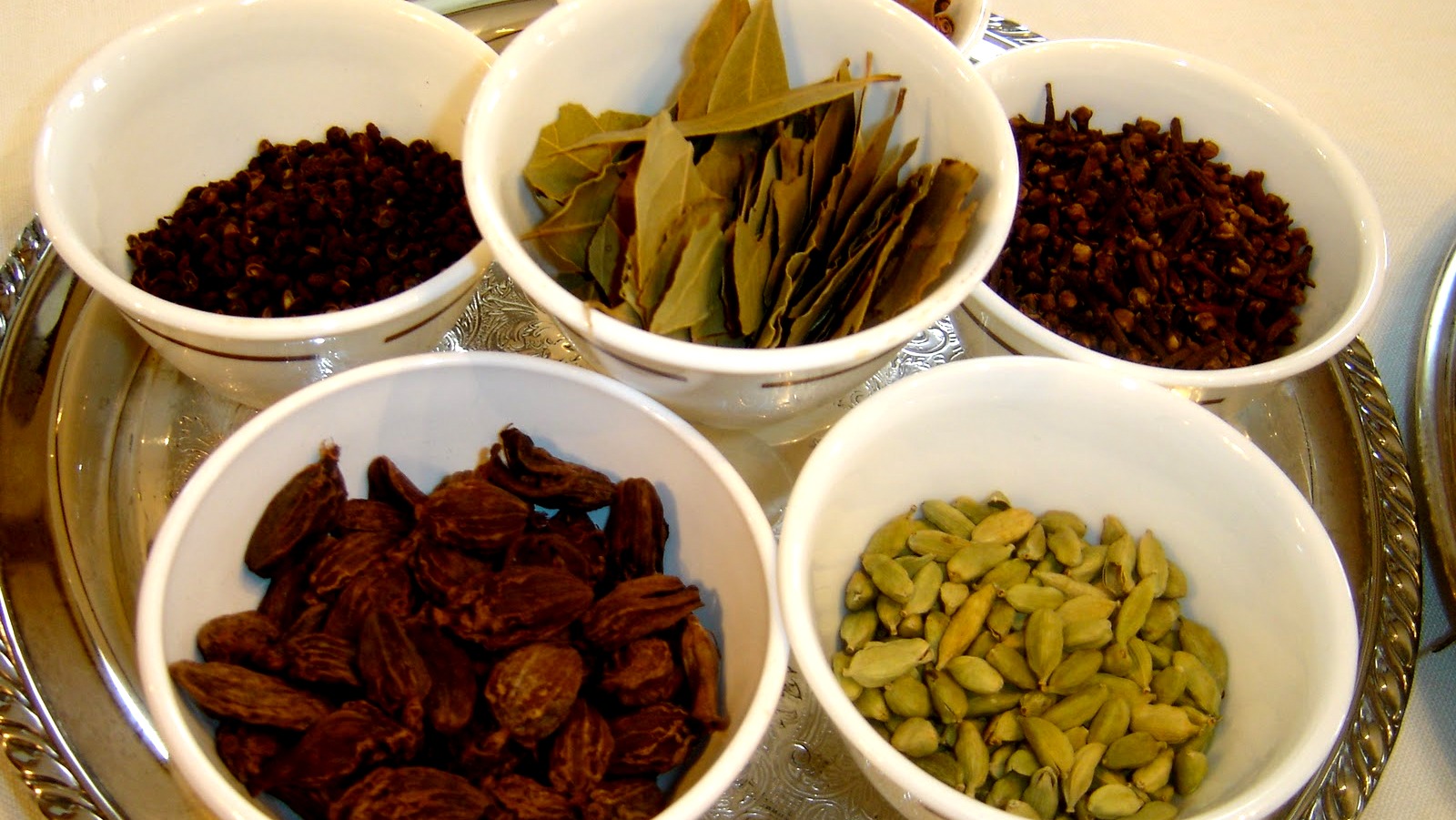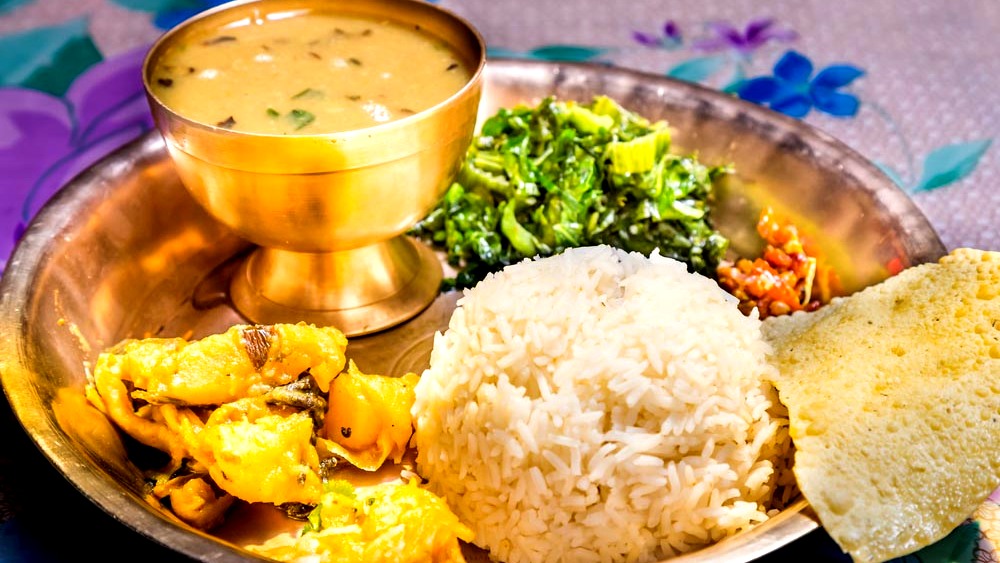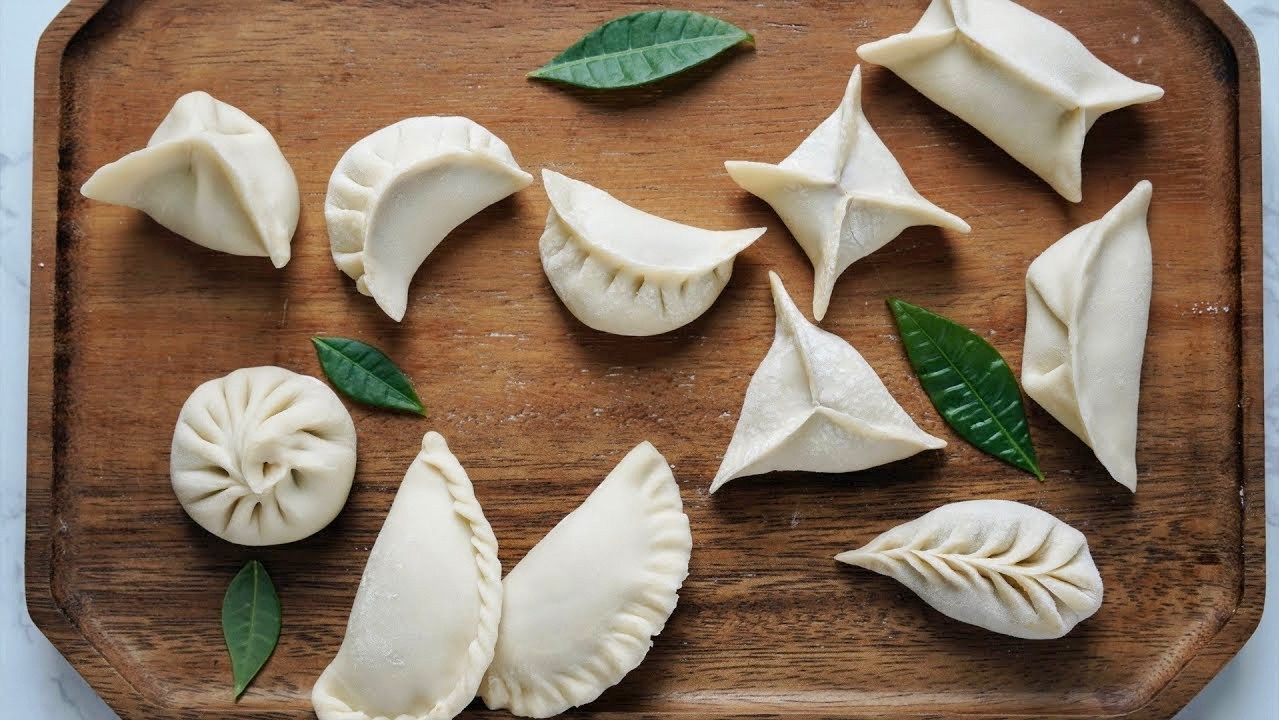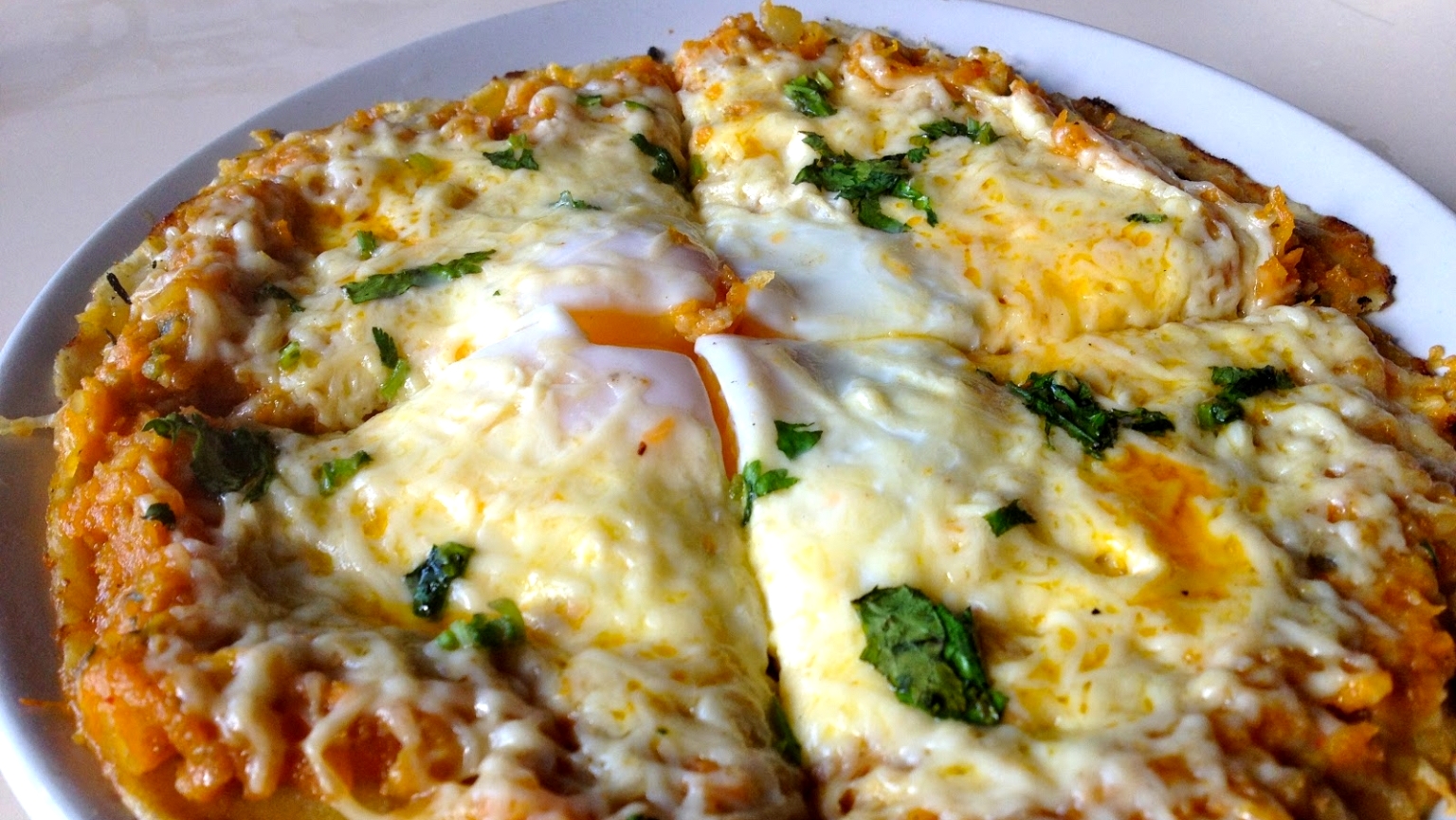Cooking with Nepali Style: Tips and Tricks from Nepali Chefs, brought to you by Kathmandu Cooking Academy. Dive deep into the essence of Nepali cuisine, exploring a treasure trove of flavors, techniques, and culinary secrets that have been cherished across generations. This blog series is your ultimate guide to mastering Nepali cuisine recipes, understanding the pivotal role of Nepali spices and herbs, and learning the art of traditional Nepali cooking. Whether you're eager to learn how to make momos, perfect a Nepali dal recipe, or explore the nuances of Cooking with Timur (Sichuan Pepper), we've got you covered. From Nepali kitchen tips to authentic Nepali dishes, fermented foods in Nepal, Dhungar method cooking, and the use of ghee in Nepali cuisine, each article is designed to enhance your culinary skills and introduce you to the rich tapestry of Nepali food preparation. Join us as we celebrate Nepali vegetarian dishes, delve into Nepali meat recipes, and share the spice blends for Nepali food that make Nepali cuisine so distinctive. Learn from Nepali chefs as they reveal their cooking secrets and techniques that will inspire you to learn Nepali cooking style and bring the flavors of Nepal into your kitchen.
Our academy stands out as the best choice for learners of all levels, thanks to our deep-rooted passion for preserving the rich traditions of Nepali cooking, combined with a modern teaching approach. We offer an unparalleled learning experience, meticulously designed to cover every facet of Nepali culinary arts—from mastering the foundational Nepali spices and herbs to exploring the intricate techniques behind beloved dishes like momos and dal. Our curriculum is thoughtfully crafted by expert Nepali chefs who bring years of experience and a treasure trove of secrets from the heart of Nepal. Here, students not only learn the art of Nepali cooking but also immerse themselves in the culture and traditions that make Nepali cuisine uniquely captivating. By choosing Kathmandu Cooking Academy, you're embarking on a culinary journey that promises to transform your cooking skills and deepen your appreciation for authentic Nepali dishes. Join us to unlock the secrets of Nepali cuisine and bring the flavors of Nepal right into your kitchen.
Nepali Kitchen Essentials
Cooking with Nepali Style: Tips and Tricks from Nepali Chefs dives deep into the heart of Nepali cooking, offering a rich tapestry of flavors, techniques, and culinary wisdom. One crucial aspect of mastering Nepali cuisine is understanding the Nepali kitchen essentials. Here, Kathmandu Cooking Academy highlights the indispensable tools, spices, and ingredients that form the backbone of authentic Nepali cooking, ensuring you're well-equipped to bring the flavors of Nepal into your home.
Essential Tools and Utensils
- Momos Steamer: A must-have for making Nepal’s beloved dumplings, allowing for perfect steaming.
- Masu Ko Chulo (Clay Oven): Though not practical for all, it's the traditional way to impart a smoky flavor to dishes.
- Karahi (Wok): Versatile for frying, sautéing, and simmering various dishes, especially for making curries and deep-frying.
- Mortar and Pestle or Masala Grinder: Essential for grinding spices and herbs, ensuring fresh flavors in every dish.
- Silauto and Lohoro (Stone Grinder): Traditional Nepali tools for making pastes and grinding spices, valued for the unique texture they impart.
Must-Have Spices and Herbs

- Timur (Sichuan Pepper): A hallmark of Nepali cuisine, offering a unique numbing sensation and citrusy flavor.
- Jimbu: An aromatic herb used for flavoring lentil dishes and soups, known for its distinctive onion-like taste.
- Turmeric, Cumin, Coriander, and Fenugreek Seeds: The foundational spices that create the rich, complex flavors characteristic of Nepali dishes.
- Asafoetida (Hing): Used sparingly, it imparts a leek-like flavor and is essential in dal and vegetable dishes.
Staple Ingredients
- Rice and Lentils (Dal-Bhat): The cornerstone of Nepali meals, serving as the base for most dishes.
- Mustard Oil and Ghee: Widely used in cooking for their distinctive flavors and high smoke points, they're integral in frying and sautéing.
- Fermented Foods: Such as Gundruk (fermented leafy greens) and Sinki (fermented radish), adding depth and umami to dishes.
- Flour (Wheat and Buckwheat): Essential for making rotis, momos, and other traditional breads and dumplings.
Tips for a Well-Stocked Nepali Kitchen
- Freshness is Key: Regularly stock up on fresh spices and herbs, as their flavors diminish over time.
- Organization: Keep spices in airtight containers, labeled and within easy reach to streamline cooking.
- Versatility: Invest in versatile tools that can be used for multiple purposes, maximizing efficiency in the kitchen.
- Practice Traditional Techniques: Familiarize yourself with traditional methods, such as the Dhungar method of smoking dishes, to bring authentic Nepali flavors to your cooking.
With these essentials and insights from Kathmandu Cooking Academy, you're well on your way to mastering the art of Nepali cuisine. Embrace the journey of exploring Nepali kitchen tips and the rich traditions that make Nepali food uniquely delightful and heartwarming.
Traditional Nepali Recipes
In the heart of Cooking with Nepali Style: Tips and Tricks from Nepali Chefs, traditional recipes play a pivotal role. These recipes are not just meals; they're a celebration of Nepal's rich culinary heritage, passed down through generations. Kathmandu Cooking Academy takes pride in sharing some of these cherished recipes, providing a window into the soul of Nepali cuisine. Here are two traditional Nepali recipes that are both iconic and beloved, embodying the essence of Nepali cooking.
1. Dal Bhat - The Quintessential Nepali Meal

Ingredients:
- 1 cup of lentils (preferably a mix of red and yellow lentils for variety)
- 4 cups of water
- 1 teaspoon turmeric powder
- Salt, to taste
- 2 tablespoons mustard oil or ghee
- 1 teaspoon cumin seeds
- 1-2 red chilies
- 1/2 teaspoon asafoetida (hing)
- 1 onion, finely chopped
- 2 cloves garlic, minced
- 1 teaspoon ginger, grated
- 1 tomato, chopped
- Fresh coriander leaves for garnish
Instructions:
- Rinse the lentils until the water runs clear, then add them to a pot with water, turmeric, and salt. Bring to a boil, then simmer until the lentils are soft and the dal has thickened.
- In another pan, heat the oil or ghee. Add cumin seeds and red chilies, allowing them to sputter.
- Add asafoetida, onion, garlic, and ginger, sautéing until golden.
- Mix in the chopped tomato, cooking until soft.
- Pour this tempering (Tadka) over the cooked lentils, stirring well. Garnish with fresh coriander.
- Serve with steamed rice (Bhat), complemented by vegetable curries or pickles.
2. Momos - Nepali Dumplings
Ingredients:
- For the dough: 2 cups all-purpose flour and about 3/4 cup water
- For the filling: 1 pound minced chicken, pork, or vegetables, 1 onion finely chopped, 1 tablespoon ginger-garlic paste, 1 teaspoon turmeric, 1 teaspoon cumin powder, Salt and pepper to taste, Chopped coriander
Instructions:
- Mix flour with water to form a smooth dough. Knead well and let it rest for at least 30 minutes.
- Combine the filling ingredients in a bowl, mixing thoroughly.
- Roll out the dough into small, thin circles. Place a spoonful of filling in the center of each circle.
- Pleat the edges of the dough to encase the filling, forming the momos. Ensure they are sealed well.
- Steam the momos for about 10-12 minutes or until the dough becomes glossy and slightly transparent.
- Serve hot with a spicy tomato and Timur dipping sauce.
These recipes are just a starting point for exploring the vast and flavorful world of Nepali cuisine. Each dish offers a unique taste of Nepal's culinary diversity and the rich cultural tapestry that defines this beautiful country. At Kathmandu Cooking Academy, we're passionate about sharing these traditional recipes and techniques, ensuring that the art of Nepali cooking is preserved and celebrated by food enthusiasts around the globe.
Learn Nepali Cooking Techniques
Embarking on a journey to learn Nepali cooking techniques with "Cooking with Nepali Style: Tips and Tricks from Nepali Chefs" is an adventure into the heart of Nepal's rich culinary tradition. At Kathmandu Cooking Academy, we emphasize the importance of mastering various traditional cooking techniques that are the foundation of creating authentic Nepali dishes. These techniques passed down through generations, not only enhance the flavor of the food but also connect us with the heritage and culture of Nepal. Here, we highlight some key Nepali cooking techniques that every enthusiast should learn.
1. Tadka (Tempering) Technique
- Tadka, or tempering, is a method where spices are roasted in hot oil or ghee to release their essential oils and flavors before being added to a dish. This technique is crucial in Nepali cooking, especially for lentil dishes (dals) and curries. The key to a perfect tadka is the timing and sequence of adding spices, ensuring they do not burn but become fragrant and infuse the oil.
2. Dhungar (Smoking) Method
- The Dhungar method is a traditional technique used to infuse a smoky flavor into dishes. It involves heating a piece of charcoal until it is red hot, placing it in a small bowl, and then placing the bowl in the pot of food (like curries or dals). A few drops of ghee are added to the charcoal, creating smoke, which is then trapped inside the pot by sealing it with a lid. After a few minutes, the charcoal is removed, leaving behind a rich, smoky flavor.
3. Steaming for Momos
- Steaming is a fundamental technique in Nepali cuisine, particularly for making momos. The process involves cooking food by placing it in a steamer basket over boiling water. The steam cooks the food gently, preserving its flavors and nutrients. Achieving the perfect texture for momos requires mastering the amount of water, the consistency of the dough, and the steaming time.
4. Fermentation
- Fermentation is widely used in Nepali cuisine to prepare various traditional dishes, including Gundruk (fermented leafy greens) and Dhido (fermented grain). This technique not only enhances the shelf life of food but also increases its nutritional value and adds a unique taste. Learning the proper conditions and time required for fermentation is essential for achieving the desired results.
5. Use of Masala Grinder
- In Nepali cooking, grinding spices is a daily necessity to ensure the freshness and potency of flavors in dishes. Using a masala grinder or traditional Silauto and Lohoro (stone grinder) allows for the preparation of fresh spice blends, chutneys, and pastes. This technique is key to achieving the authentic taste of Nepali cuisine.
At Kathmandu Cooking Academy, we believe that mastering these traditional Nepali cooking techniques is not just about following recipes—it's about embracing the culture and traditions that make Nepali cuisine so special. Through our "Cooking with Nepali Style: Tips and Tricks from Nepali Chefs" series, we aim to provide a comprehensive understanding of these techniques, encouraging our students to explore and innovate while staying true to the essence of Nepali cooking. Join us to embark on a culinary journey that promises to transform your cooking and deepen your appreciation for the rich flavors of Nepal.
How to Make Momos
Making momos, a beloved staple of Nepali cuisine, is both an art and a celebration of flavors. In "Cooking with Nepali Style: Tips and Tricks from Nepali Chefs," we delve into the intricacies of crafting these delicious dumplings. Here's a comprehensive guide from Kathmandu Cooking Academy to help you master the art of making momos.

Ingredients:
For the Dough:
- 2 cups all-purpose flour
- About 3/4 cup water (adjust as needed)
- A pinch of salt
For the Chicken Filling:
- 1 pound ground chicken (vegetable or other meat fillings can also be used)
- 1 large onion, finely chopped
- 3-4 cloves of garlic, minced
- 1-inch piece of ginger, minced
- 2-3 green chilies, finely chopped (adjust to taste)
- A handful of cilantro, chopped
- 1 teaspoon ground turmeric
- 1 teaspoon ground cumin
- Salt and pepper, to taste
- 1 tablespoon mustard oil (or vegetable oil)
Instructions:
Preparing the Dough:
- Mix the flour, salt, and water in a large mixing bowl. Start with half the water and gradually add more until you can form a smooth, pliable dough. The dough shouldn't be too sticky or too dry.
- Knead the dough for about 5-7 minutes until it becomes soft and elastic. Cover it with a damp cloth and let it rest for at least 30 minutes. This resting period makes the dough easier to work with.
Making the Filling:
- Combine the ground chicken with all the filling ingredients in a bowl. Mix thoroughly to ensure the spices and flavors are evenly distributed throughout the meat.
- Rest the mixture for about 20-30 minutes to allow the flavors to meld.
Assembling the Momos:
- Divide the dough into small balls, about the size of a golf ball.
- Roll each ball into a thin circle, about 3-4 inches in diameter. The center should be slightly thicker than the edges.
- Place a tablespoon of filling in the center of each rolled-out dough circle.
- Fold and pleat the edges to enclose the filling completely. There are many shapes you can make, but the most common is a round or crescent shape. Ensure the momos are sealed well to prevent the filling from leaking out during steaming.
Cooking the Momos:
- Prepare a steamer by boiling water in the bottom part. Lightly oil the steamer's surface where you'll place the momos to prevent sticking.
- Arrange the momos in the steamer, ensuring they don't touch each other.
- Steam for about 10-12 minutes until the dough becomes translucent and glossy. The exact time may vary based on the size of your momos and the intensity of the steam.
Serving:
- Serve hot momos with a spicy tomato and Timur dipping sauce, which complements the flavors beautifully. The sauce can be made by blending tomatoes, Timur (Sichuan pepper), cilantro, garlic, and salt to taste, creating a perfect balance of spicy, tangy, and umami flavors.
Making momos is a delightful experience that allows for creativity in fillings and shapes. With practice, you'll find your rhythm and personal touch in this beloved dish. At Kathmandu Cooking Academy, we encourage you to embrace the tradition of momo-making, bringing a taste of Nepal into your home with each bite.
Nepali Chef's Cooking Secrets
In the vibrant world of Nepali cuisine, every dish tells a story of tradition, culture, and the rich biodiversity of the region. At Kathmandu Cooking Academy, we are privileged to have a team of skilled chefs who not only masterfully create authentic Nepali dishes but also generously share their cooking secrets. Here, in "Cooking with Nepali Style: Tips and Tricks from Nepali Chefs," we unveil some of the closely guarded secrets of Nepali chefs that make their dishes stand out.
Secret 1: The Harmony of Spices
- The foundation of Nepali cuisine lies in its spices. Nepali chefs emphasize the importance of understanding each spice's flavor profile and how they complement each other. The secret lies in the roasting and grinding of spices just before cooking, which enhances their aroma and flavor. A balance between spices like cumin, coriander, Timur (Sichuan pepper), and fenugreek seeds is essential for creating a harmonious and authentic taste.
Secret 2: Slow Cooking
- Patience is a virtue, especially in Nepali cooking. Many Nepali dishes, especially curries and stews, benefit from slow cooking on a low flame. This method allows the ingredients to cook evenly, melding the flavors together beautifully and tenderizing meat to perfection. The slow simmering process is the key to unlocking the depth of flavors in traditional dishes like Dal Bhat and Khasi ko Masu.
Secret 3: Freshness is Paramount
- Nepali chefs swear by the freshness of their ingredients, be it spices, herbs, vegetables, or meats. Using fresh, locally sourced ingredients ensures that the dishes retain the essence of Nepali cuisine. The vibrant taste of a dish can often be attributed to the freshness of herbs like cilantro, mint, and jimbu (Himalayan herb) used in the cooking process.
Secret 4: The Art of Fermentation
- Fermentation plays a crucial role in Nepali cuisine, adding unique flavors and textures to dishes. Gundruk (fermented mustard greens) and Sinki (fermented radish) are prime examples. Nepali chefs highlight the importance of mastering the fermentation process, which not only enhances the dish's taste but also increases its nutritional value.
Secret 5: Using the Right Fats
- The choice of fat can significantly impact the flavor of a dish. Ghee and mustard oil are predominantly used in Nepali cooking. Ghee is favored for its rich, nutty flavor, ideal for tempering spices and making sweets, while mustard oil, with its distinctive sharp taste and high smoke point, is preferred for frying and sautéing. Understanding how and when to use these fats can transform a simple dish into a culinary masterpiece.
Secret 6: Balance in Flavors
- Achieving the right balance between the six tastes (sweet, sour, salty, bitter, pungent, and astringent) is crucial in Nepali cuisine. This balance is not just about the individual ingredients but also about how they come together in a dish. For instance, the tanginess of tomato achaar perfectly complements the savory flavors of momos, creating a delightful taste experience.
Secret 7: Presentation and Garnish
- Finally, the presentation of a dish and the use of garnishes are taken seriously. A beautifully presented dish enhances the dining experience, inviting you to taste with your eyes before your palate. The use of fresh herbs, edible flowers, and traditional serving ware adds to the authenticity and appeal of Nepali cuisine.
These secrets, shared by the chefs at Kathmandu Cooking Academy, are just the beginning of your journey into Nepali cooking. Embracing these tips and techniques will not only improve your cooking skills but also bring you closer to the heart and soul of Nepali cuisine. Whether you're a seasoned chef or a culinary enthusiast, incorporating these secrets into your cooking will surely elevate your dishes, making every meal a celebration of Nepali culture.
Nepali Street Food Recipes
Nepali street food offers a glimpse into the country's vibrant, bustling streets, where flavors burst and traditions thrive. In "Cooking with Nepali Style: Tips and Tricks from Nepali Chefs," we explore some beloved Nepali street food recipes that capture the essence of Nepal's culinary diversity. Kathmandu Cooking Academy is excited to share these recipes, allowing you to recreate the magic of Nepali street food at home.
1. Chatamari - The Nepali Rice Crepe
Often referred to as the 'Nepali Pizza,' Chatamari is a traditional Newari snack that has gained popularity as a street food staple.

Ingredients:
- 1 cup rice flour
- 1 1/2 cups water (adjust to get a thin batter)
- Salt to taste
- Toppings: Minced meat (chicken or pork), chopped onions, tomatoes, green chilies, coriander leaves, and beaten eggs.
Instructions:
- Mix the rice flour, water, and salt to form a smooth, thin batter.
- Heat a non-stick pan over medium heat. Pour a ladleful of the batter to form a thin crepe.
- Add your choice of toppings: minced meat, onions, tomatoes, green chilies, and coriander. Then, gently pour some beaten egg over the toppings.
- Cover and cook on low heat until the egg is set and the bottom of the Chatamari is crispy.
- Serve hot as a delicious snack or appetizer.
2. Pani Puri - Spicy Water Balls
Pani Puri is a beloved snack across Nepal, offering a burst of tangy, spicy, and sweet flavors in every bite.
Ingredients:
- Ready-made Puri shells (available at Asian grocery stores)
- For the filling: Boiled and mashed potatoes, chickpeas, finely chopped onions, and coriander leaves.
- For the spicy water (Pani): Tamarind pulp, mint leaves, coriander leaves, green chilies, ginger, chat masala, and black salt.
Instructions:
- Prepare the spicy water by blending tamarind pulp, mint, coriander, green chilies, ginger, chat masala, and black salt with water to taste. Strain and chill.
- Mix the filling ingredients together.
- Crack a small hole at the top of each puri shell. Fill with the potato-chickpea mixture.
- Fill each puri with spicy water just before eating to maintain the crunch. Enjoy the explosion of flavors!
3. Momos - Steamed Dumplings
While we've previously discussed momos, it's impossible not to mention them when talking about Nepali street food. This versatile dish can be found in almost every street corner of Nepal.
Ingredients:
- For the dough: All-purpose flour and water.
- For the filling: Ground chicken, pork, or vegetables, combined with onions, garlic, ginger, cilantro, salt, pepper, and a dash of oil.
Instructions:
- Prepare the dough and let it rest.
- Mix the filling ingredients thoroughly.
- Roll out small circles from the dough, place a spoonful of filling in the center, and pleat the edges to seal.
- Steam the momos for about 10-12 minutes until translucent and serve with a spicy dipping sauce.
4. Sel Roti - Traditional Rice Doughnut
A festive favorite, Sel Roti is a sweet, ring-shaped, rice flour doughnut, crispy on the outside and soft on the inside.
Ingredients:
- 2 cups rice flour
- 1/2 cup sugar
- 1/4 cup melted butter
- 1/2 cup milk
- A pinch of cardamom powder
- Oil for deep frying
Instructions:
- Mix all ingredients except oil to form a thick batter.
- Heat oil in a deep pan.
- Pour the batter in ring shapes into the hot oil using a bottle with a narrow spout or a plastic bag with a corner cut off.
- Fry until golden brown on both sides, then drain on paper towels.
Embracing these recipes from Kathmandu Cooking Academy not only brings the flavors of Nepali streets into your home but also connects you with the vibrant culture and traditions of Nepal. Whether it's the savory delight of Chatamari, the tangy burst of Pani Puri, the comforting bite of momos, or the sweet crunch of Sel Roti, each dish offers a unique taste experience, celebrating the rich culinary heritage of Nepal.
"Cooking with Nepali Style: Tips and Tricks from Nepali Chefs" has journeyed through the vibrant landscape of Nepali cuisine, uncovering the secrets behind traditional recipes, essential kitchen tools, cherished cooking techniques, and the soulful art of street food. Kathmandu Cooking Academy has been honored to guide you through this culinary exploration, sharing the wisdom of Nepali chefs and the essence of authentic Nepali cooking. Whether it's the delicate folding of momos, the intricate balance of spices, or the heartwarming simplicity of Dal Bhat, we hope these articles inspire you to bring the rich flavors and traditions of Nepal into your kitchen. Embrace these teachings as more than just recipes; see them as a gateway to experiencing and preserving the profound cultural heritage that Nepali cuisine offers to the world.


